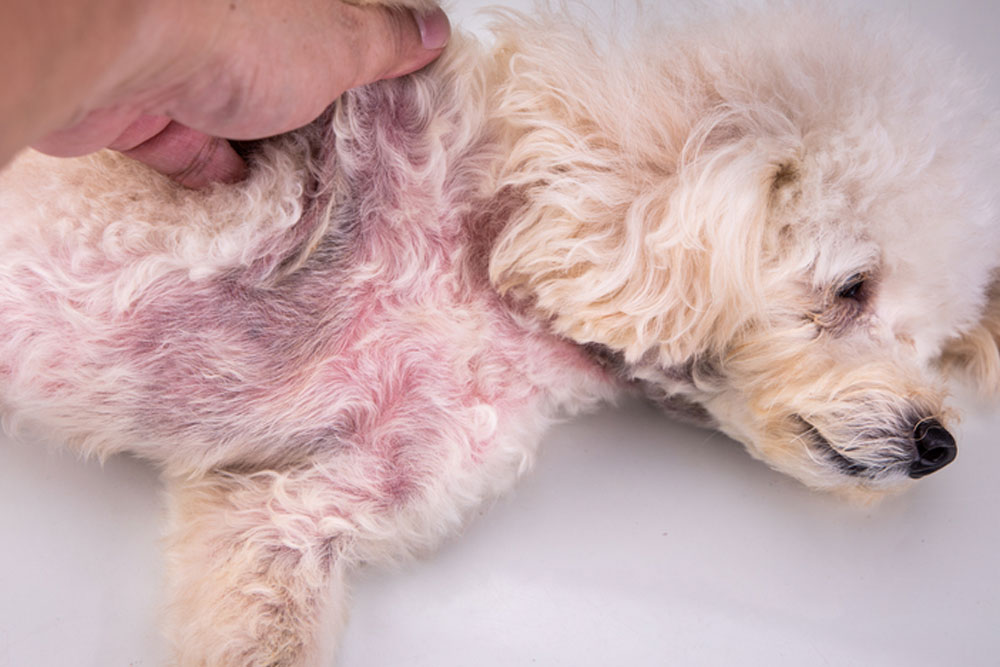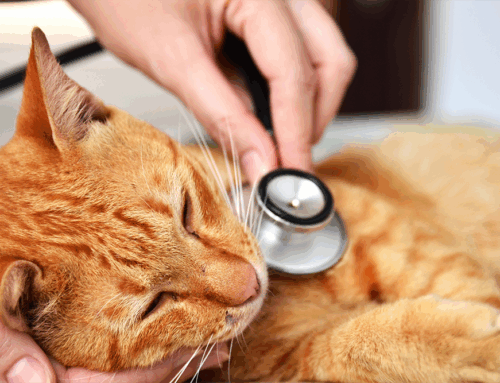From Itch to Infection: Identifying and Treating Skin Problems in Dogs
Expert Care from the Veterinary Emergency and Specialty Center of Northern Arizona
Why Your Dog’s Skin Health Matters
Your dog’s skin is their largest organ—and one of the most important indicators of overall health. Yet, skin infections in dogs are frequently overlooked or misdiagnosed. Whether caused by bacteria, fungi, parasites, or allergies, skin infections can escalate quickly without proper treatment, leading to chronic discomfort, hair loss, or more serious systemic conditions.
At the Veterinary Emergency and Specialty Center of Northern Arizona, we specialize in accurately diagnosing and treating dermatological issues in dogs. This guide is designed to help you recognize the early signs of skin infection, understand the underlying causes, and know when to seek veterinary care.
How to Recognize a Skin Infection in Your Dog
Key Signs to Watch For
Dogs often show both visible and behavioral signs of skin distress. Catching these symptoms early can prevent more serious complications.
Visible Symptoms
- Redness or inflammation
- Scabs, flaking, or crusty patches
- Pustules or pimples
- Bald spots or thinning fur
- Greasy or overly dry skin
Behavioral Symptoms
- Constant scratching, licking, or chewing
- Rubbing against furniture or carpets
- Unusual odor from the skin or ears
Learn More: Dog Allergies: Symptoms & Treatment
Common Causes of Skin Infections in Dogs
Understanding what causes your dog’s skin issues is essential for both treatment and prevention. Below are the most frequent culprits.
1. Bacterial Infections (Pyoderma)
Often caused by Staphylococcus bacteria, pyoderma is one of the most common skin conditions in dogs. Triggers include:
- Skin folds (especially in Bulldogs, Shar-Peis, and Pugs)
- Open wounds or scrapes
- Allergies or hormonal imbalances compromising the skin barrier
Treatment: Typically includes oral or topical antibiotics, medicated shampoos, and wound care.
Read: Topical Therapy for Allergic Dermatitis
2. Fungal Infections (Ringworm & Yeast Overgrowth)
Fungal infections thrive in warm, moist environments and may affect ears, paws, and folds of skin.
Symptoms:
- Circular, red, scaly patches (ringworm)
- Thickened or greasy skin (yeast)
- Ear scratching and discharge
Treatment: Antifungal medications, medicated baths, and improved hygiene.
Tip: How to Clean Your Dog’s Ears
3. Allergies (Environmental or Food-Based)
Allergies are a leading cause of skin inflammation in dogs and often result in secondary infections.
Common Allergens:
- Pollen, mold, dust mites
- Flea saliva (causing flea allergy dermatitis)
- Food ingredients like beef, chicken, or dairy
Symptoms:
- Persistent itching around the face, ears, or paws
- Hives, swelling, or recurrent ear infections
Treatment: Allergy testing, antihistamines, corticosteroids, or specialized diets.
Explore: Allergy Tips for Small Animals
4. Parasites (Fleas, Ticks, Mites)
External parasites can wreak havoc on your dog’s skin and often go unnoticed until an infection has developed.
Watch For:
- Intense scratching near the tail base or groin
- Small scabs and hair loss
- Flea dirt (tiny black specks) in the coat
Treatment: Prescription flea and tick preventatives, antiparasitic shampoos, and routine parasite control.
Learn: The Importance of Year-Round Parasite Prevention
How Vets Diagnose Skin Infections in Dogs
Accurate diagnosis is the foundation of effective treatment. At our hospital, we use a combination of diagnostics to pinpoint the exact cause:
- Skin Cytology: Examining skin cells under a microscope
- Skin Scraping: To detect mites or fungal spores
- Allergy Testing: Identifying triggers for food or environmental sensitivities
- Blood Tests: Screening for underlying health conditions
Learn More: Small Animal Skin Cytology
Treatment Options for Skin Infections in Dogs

Medications and Topical Therapies
Once the root cause is identified, treatment may include:
- Antibiotics: For bacterial infections
- Antifungals: For yeast or ringworm
- Steroids or Antihistamines: To reduce itching and inflammation
- Medicated Shampoos: For symptom relief and prevention
At-Home Support and Recovery Tips
You can support your dog’s recovery through:
- Routine Grooming: Reduces matting and removes allergens
- Clean Environment: Regularly wash bedding and vacuum
- Specialized Diets: Hypoallergenic or anti-inflammatory nutrition plans
Helpful Resource: Why Pets Need Regular Grooming
When to Seek Emergency Veterinary Care
Certain symptoms signal an urgent health issue. Contact your veterinarian immediately if your dog experiences:
- Facial swelling or hives (potential allergic reaction)
- Open wounds or pus-filled sores
- Sudden lethargy, fever, or appetite loss
- Severe itching leading to bleeding or self-harm
Visit Our Emergency Services Page: Veterinary Emergency and Specialty Center of Northern Arizona
Tips for Preventing Skin Infections in Dogs
Prevention is key to long-term skin health. Follow these tips to reduce your dog’s risk:
- Routine Veterinary Exams: Detect and treat issues early
- Year-Round Parasite Prevention: Protect against fleas, ticks, and mites
- Regular Baths & Grooming: Especially for breeds with thick coats or skin folds
- Balanced Nutrition: Diets with Omega-3s help improve skin and coat condition
Read: The Importance of Wellness Exams
Protect Your Dog’s Skin with Prompt Care
Skin infections in dogs can quickly escalate if ignored. Fortunately, with early detection, accurate diagnosis, and a tailored treatment plan, most skin conditions are highly manageable. If your dog is showing signs of skin irritation or infection, don’t wait—our veterinary team is here to help.







Leave A Comment